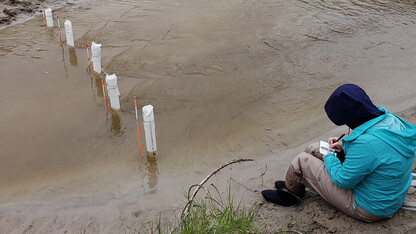· 3 min read
Physics of Olympian feats: Bobsled run
For athletes, the Winter Olympics mark the culmination of a grueling four-year pursuit of gold, silver or bronze that demands time commitments and physical sacrifices inconceivable to most.
For viewers, they’re a source of entertainment, national pride, and often-obscure stories thrust into a global spotlight that shines for two weeks.
But for the University of Nebraska–Lincoln’s Tim Gay and his fellow physicists, the Winter Olympics are a masterclass in classroom physics applied on ice and snow. Though he’s best known for explaining the Newtonian physics at play on the gridiron, Gay recently helped Nebraska Today understand a few of the phenomena behind (and underneath and around) the athletic feats of the 2022 Winter Games.
Conservation practices
Gay said the so-called sliding sports — the bobsled, luge and skeleton — reward those who best practice an overarching physics principle: the conservation of energy.
The energy in question is kinetic, or the energy of motion. Bobsledders like Husker Curt Tomasevicz, who was part of four-man teams that rode to gold in 2010 and silver in 2014, build that kinetic energy at the top of a course by sprinting as they push the bobsled forward. To maximize its kinetic energy, a team must exert as little backward force as possible while leaping into its torpedo-shaped, aerodynamic chariot.
Of course, the team gets plenty of assistance from the hill itself. The greater the vertical distance between the top of the hill and the bottom, the greater the potential energy. As the bobsled descends and that vertical distance decreases, so does its potential energy. But in accordance with the conservation principle, that lost potential energy converts to kinetic.
Just one force, friction, can curb that kinetic energy as the bobsled races to the bottom. Unfortunately, the friction comes in two forms. The bobsled driver is tasked with reducing one form — the friction between a bobsled’s runners and the ice — by minimizing any side-to-side slippage and steering the bobsled toward whichever portions of the course are considered the “fastest,” or introduce the least friction. The other form is air drag, which every team member is responsible for reducing by crouching in their seats and ducking their heads.
“The team that best keeps the loss of kinetic energy to a minimum,” Gay said, “wins the gold.”







